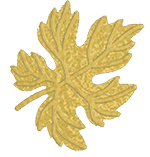
What Began As A Dream...
Started A Revolution
Dr. Konstantin Frank ignited the “Vinifera Revolution” a movement that forever changed the course of wine growing in the Finger Lakes and the United States. Dr. Frank’s vision, knowledge, and determination are credited with elevating the New York wine industry from a state of happy mediocrity to a level that today commands world attention.
Play Video
Konstantin's Introduction Story (2:35 mins)
Dr. Konstantin Frank earned his Ph.D. in Viticulture from Odessa, Ukraine in 1930 and became a leading expert in his field throughout Eastern Europe. Having survived two World Wars and the Russian Revolution, Dr. Frank immigrated to New York in 1951. At the age of 52 years old with empty pockets and no knowledge of English, he hoped to create a brighter future for his family.
He fell in love with a special property in the Finger Lakes for its exceptional characteristics – poor soils and steep slopes. With decades of knowledge and experience, Dr. Frank successfully planted the first European grape varieties in the Eastern United States in 1958.
In 1962, merely a decade after arriving in America, Dr. Frank founded Vinifera Wine Cellars. The winery quickly earned a reputation for spectacular Rieslings, and its original planting of vines formed the backbone of New York’s world-class wines and champagnes.
Konstantin's Journey
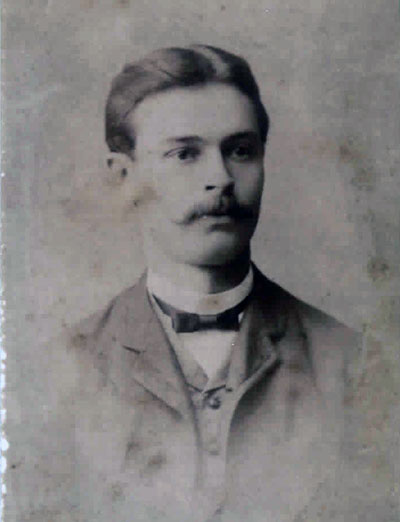
Late 1800's
Damian Frank, Konstantin's Father
Konstantin’s father, Damian, was a successful civil engineer and regional manager of the Ukrainian railroad. The Frank family had large landholdings which allowed Damian to rent the land to farmers in return for half the crop. On the remaining land, he employed help to care for his prized livestock and raise crops, including grapes for making wine. That is when he met Konstantin’s mother, Stanislava Petroskawa.
Late 1800's
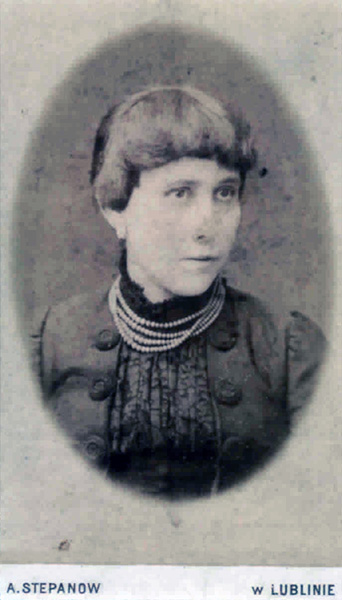
Late 1800's
Stanislava Petroskawa, Konstantin's Mother
Stanislava was the daughter of a wealthy merchant from Poland. Her family owned general stores that served the agricultural communities and imported everything from fabric to food to building materials, as well as other items not found in Ukraine. The joining of these two prosperous families gave the two newlyweds a privileged life with wealth and power.
Late 1800's
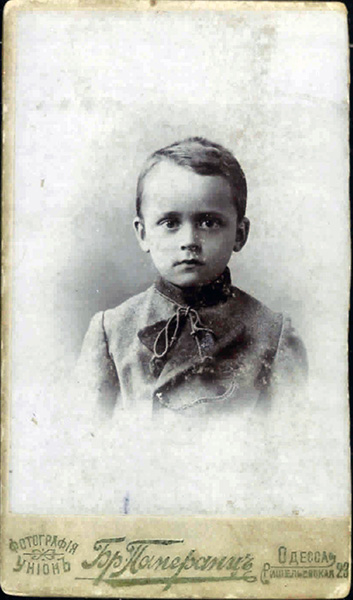
July 4th, 1899
Konstantin Frank
Konstantin was born on July 4, 1899. He was eventually one of ten children, only five of whom survived to adulthood. He was known as a serious boy with a piercing, focused look in his eye and a firmness in his jaw. By the age of twelve, he was enjoying work in the vineyards, and by fifteen, he had made his first wine. As a boy, he conducted experiments with grapes and engaged in early winemaking experiments.
July 4th, 1899
1906
The First Taste
“It was 1906 in Strasbourg at a festival; my uncle gave me two glasses of wine. I became drunk and he taught me a bad Russian word. I repeated it and my mother nearly fainted from shock. Since then I have been interested in wine”.
1906
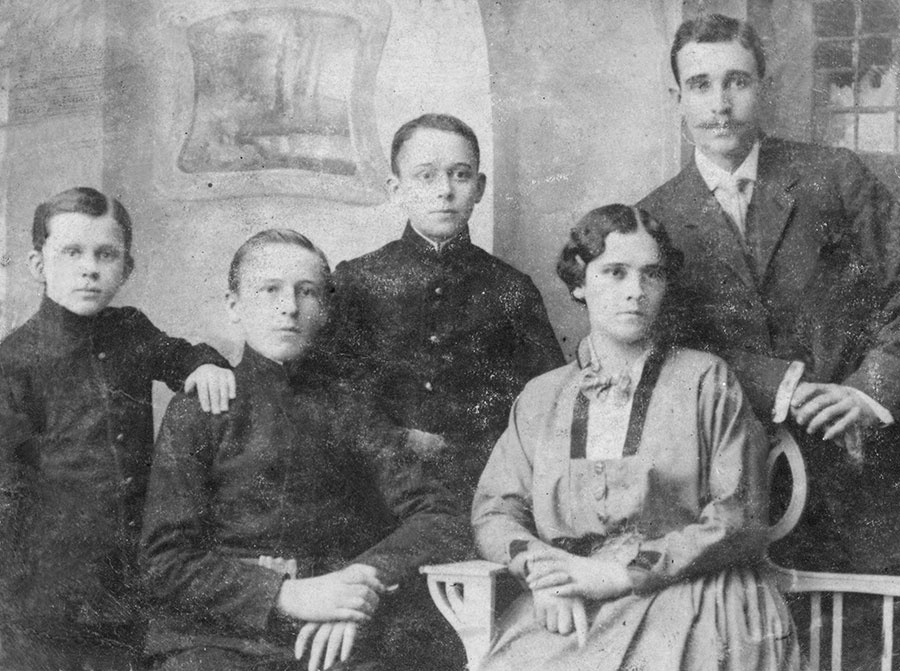
Early 1900's
The Frank Family
When Russia entered World War 1 against Germany, many ethnic Germans were exiled to Siberia. The Franks were spared due to their position in the railroad and powerful relationships. When the Russian Revolution began in 1917, the wealthy Franks leaned to the White Army of the czar. Young Konstantin (standing left to his mother) left school to fight with the White Army. That same year, the communists declared landownership illegal, the Franks were displaced from their farms, and all of their properties were confiscated. The family moved to a large apartment in Selz.
Early 1900's
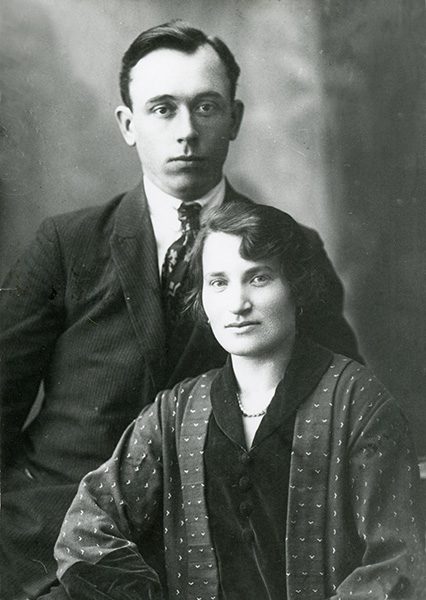
1923
The Marriage of Eugenia Bartle and Konstantin
Konstantin was working as a schoolteacher in Selz when he married Eugenia Bartle in 1923. Life in Russia was uncertain. Eugenia encouraged Konstantin to reapply to finish his degree in agriculture. Sure enough, in 1925, the same year the couple celebrated the birth of their first child, Willibald Konstantin Frank, Konstantin was accepted to the Odessa Agricultural College.
1923
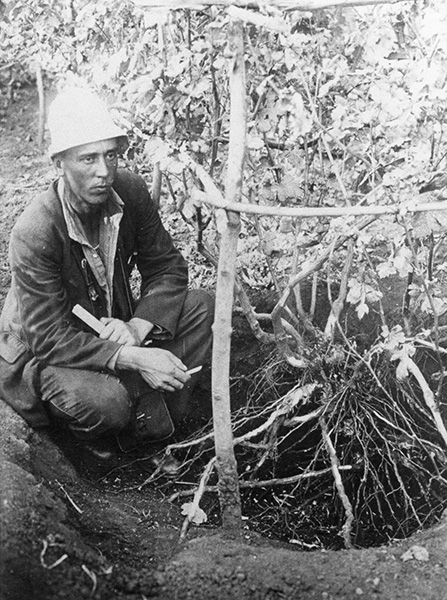
1930
Earning His Ph.D.
After earning his Ph.D. in 1930, Konstantin was assigned to a 35,000-acre collective farm called Lenina later renamed as the Troubetskoy Experimental Grape and Wine Station. Under his direction, work began to rebuild the famous vineyards with grafted vinifera vines on phylloxera-resistant and cold-resistant rootstocks.
1930
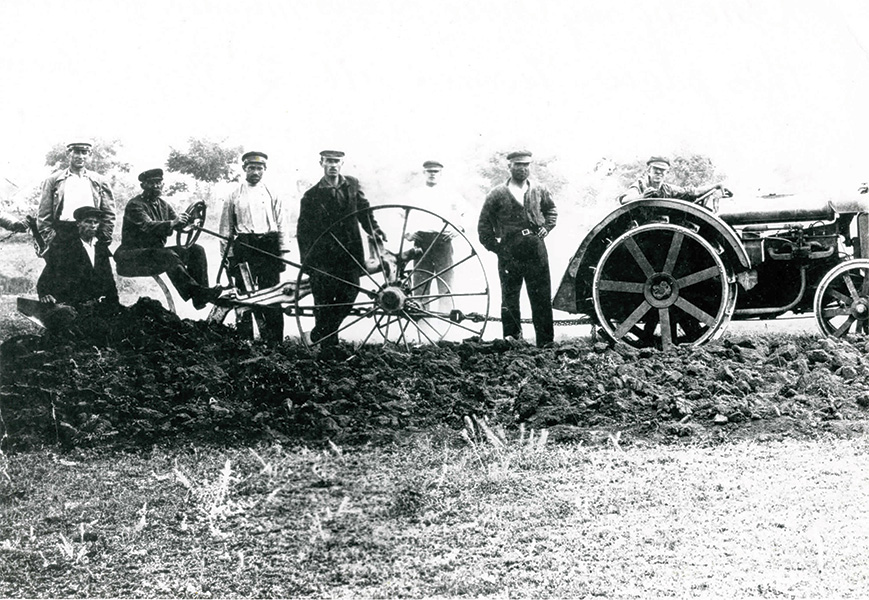
1928
The Invention of Hilling Up
Konstantin used the rebuilding of the Troubetskoy vineyards to conduct his experiments, to test root/scion matches, and to study cultivation techniques. In 1928, he developed a special plow designed to cover rootstocks, now known as “hilling up.” This image is one of three plows Konstantin invented in Russia. The first one is shown in this picture. The second one was used for deep plowing to break up a hard sub-surface later. The third plow was used to cover the graft union, known as "hilling up."
1928
Early 1930's
Surviving Stalin
During his time at Troubetskoy, Frank had received generous gifts from the United States of several Ford tractors. To break up the compacted soils, Frank instructed all three tractors to be connected. As they started to pull, the middle tractor was torn apart. Konstantin was charged with gross negligence and “willful destruction of state property.”
Konstantin would later say, "I had survived being responsible for destroying one-third of Stalin’s tractors in the Ukraine.”
Early 1930's
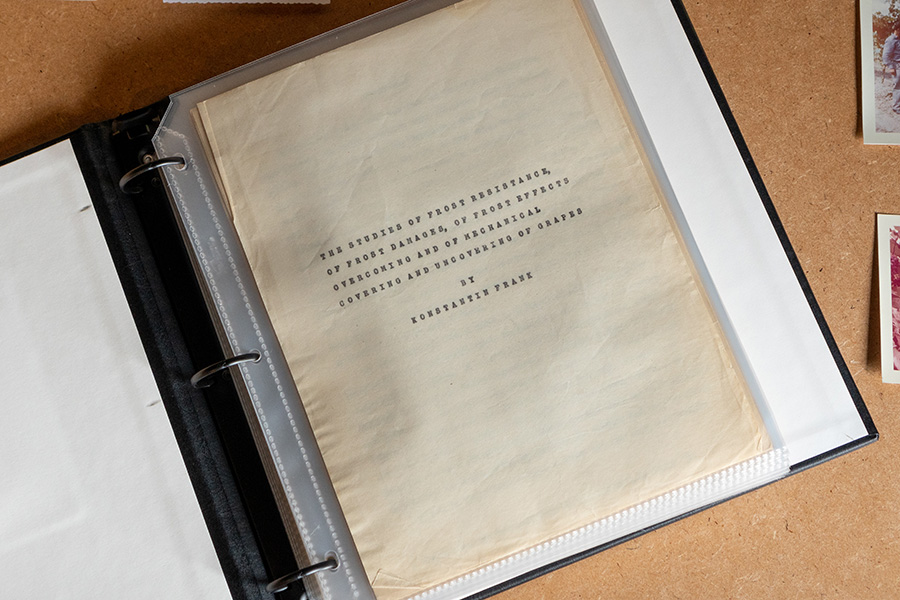
1939
Earning His Doctorate
Over the next decade, Konstantin continued to work toward his goal through his research on the cultivation of Vitis vinifera grape varieties in cold climates. In 1939, Konstantin was rewarded his doctorate with his thesis, “The Studies of Frost Resistance, of Frost Damages, of Frost Effects Overcoming and of Mechanical Covering and Uncovering of Grapes.” This document would be the collective knowledge that was needed 20 years later to plant the first vinifera vines in the Finger Lakes.
1939
1944
Leaving the Ukraine
During World War II, repression, deportations, and arrests of ethnic Germans increased. The majority of Konstantin’s siblings did not make it. In 1944, Konstantin and Eugenia decided to take their children and leave the Ukraine. With only one suitcase each and enough food for 3 days, they arrived safely in Austria. After the war, Stalin’s government designated the entire Frank family as “nonpersons” and their names were removed from public records.
1944
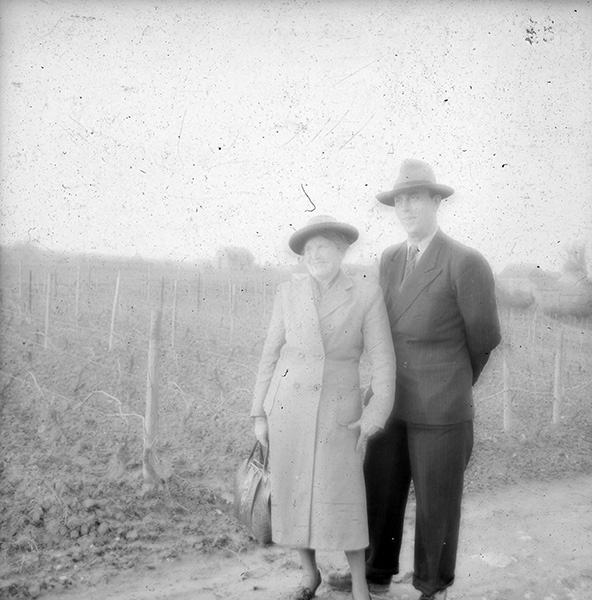
1951
Arriving in America
After a few years in Austria and Bavaria, Konstantin was not satisfied with the opportunities he found. Possibilities for life in Canada or the United States were more appealing. On December 15, 1951, the USNS General R.M. Blatchford sailed into the New York Harbor carrying Konstantin, Eugenia, and their three children. They moved into a dingy apartment in Lower Manhattan with Konstantin working as a dishwasher at night. The apartment was small for five adults, was infested with cockroaches, and amid New York City winter quite cold. He arrived in the United States with no professional contacts, very little money, no English, and no prospects. However, he brought thirty years of experience, a passion for science, an indomitable confidence, and a driving ambition to distinguish himself.
1951
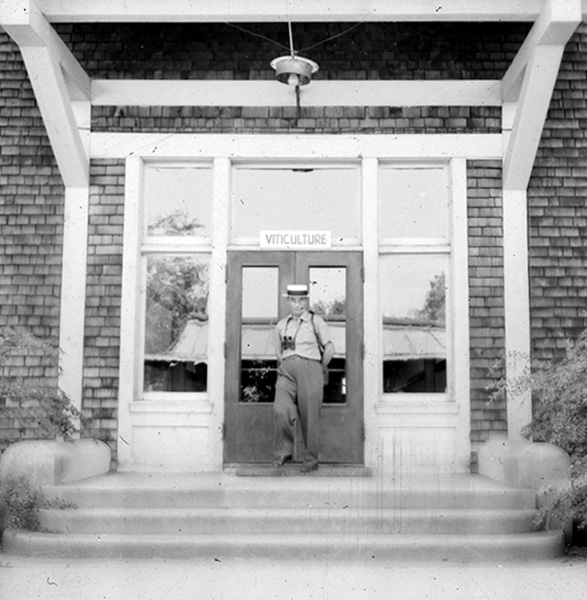
1952
Geneva Experiment Station
Konstantin arrived in Geneva in early April 1952 and was given a tour of the New York State Agricultural Experiment Station. The only position available was to work with Karl Dietrich Brase exploring field nursery practices. The station newsletter of April 16, 1952, announced, "Dr. Konstantin Frank, newly arrived from Germany, has joined the Station's Pomology Division on a temporary appointment in connection with the Stuart grant for nursery investigations. Dr Frank has twenty years of nursery experience in Russia." No mention was made that he had been the technical director for an agricultural experiment station much larger than the Geneva station.
The shift towards French hybrid grapes was well underway by 1952. When Konstantin questioned the scientists about why vinifera was not being grown, he was informed of the well-established belief that they could not be grown because of the cold climate. When he insisted that they could be grown, his view was discounted as uninformed. His colleagues suggested that he refrain from pursuing this risky proposition, which ran counter to the views of the authorities. However, for Konstantin, the vinifera proposal was not at all risky as he had been successful in growing thousands of acres of vinifera in a very cold, nearly subarctic climate on a commercial scale in Russia.
The shift towards French hybrid grapes was well underway by 1952. When Konstantin questioned the scientists about why vinifera was not being grown, he was informed of the well-established belief that they could not be grown because of the cold climate. When he insisted that they could be grown, his view was discounted as uninformed. His colleagues suggested that he refrain from pursuing this risky proposition, which ran counter to the views of the authorities. However, for Konstantin, the vinifera proposal was not at all risky as he had been successful in growing thousands of acres of vinifera in a very cold, nearly subarctic climate on a commercial scale in Russia.
1952
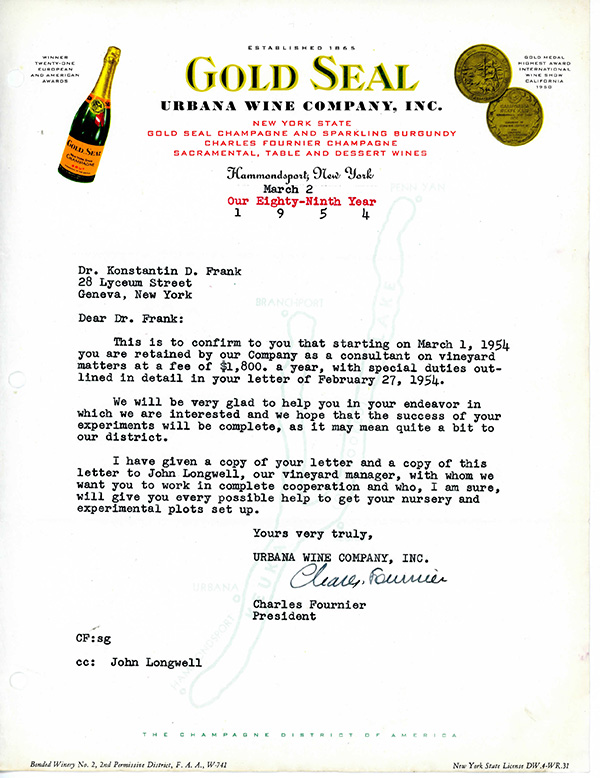
1953
Charles Fournier and Gold Seal
In 1953, Konstantin attended a seminar at the station where it is believed he met Charles Fournier, the president of Gold Seal Wines. Being able to speak French, he told Fournier that he could grow vinifera and immediately had Fournier's attention. Konstantin was hired in 1954, per the letter above, for $1,800 per year as director of vineyard research, the sole purpose was to develop a vinifera program.
1953
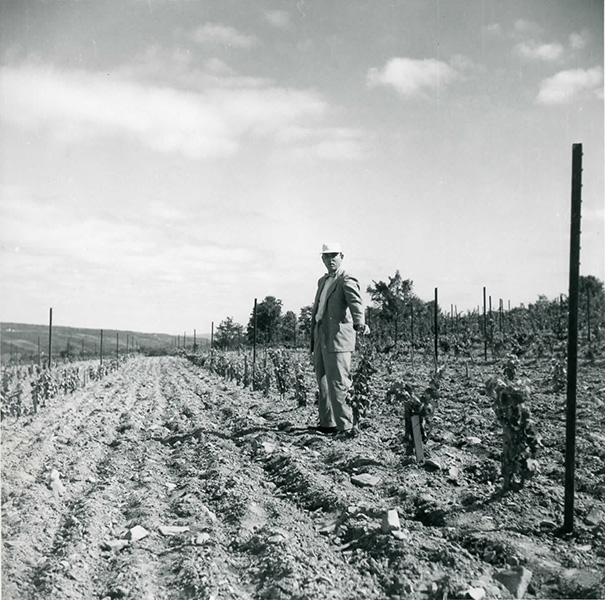
Mid 1950's
Gold Seal Vineyards
Over the next few years, Konstantin would oversee the propagation of grafts combining vinifera with more than sixty different rootstocks, ranging from old rootstocks developed from American native varieties to varieties from Ouebec and the woods around Keuka Lake. Over these years, Konstantin expanded the research plans by about fifteen acres per year.
Konstantin was faced with the extraordinary challenge of the number of soil types to be found in the Finger Lakes, "In my experience, I have never met such enormous changing of soil types on such a very small area. In a row of 70 vines, the soil changed 7 times."
Konstantin was faced with the extraordinary challenge of the number of soil types to be found in the Finger Lakes, "In my experience, I have never met such enormous changing of soil types on such a very small area. In a row of 70 vines, the soil changed 7 times."
Mid 1950's
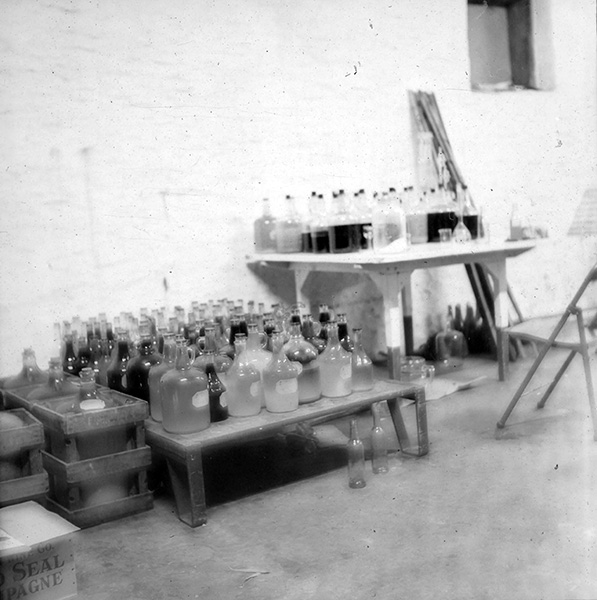
Mid 1950's
Gold Seal Experiments
Close recordkeeping would be done to measure variance in the vigor of growth, productivity, blossom time, the time fruit ripened, leaf coloring, the time the leaves fell, the degree of wood ripening, freeze resistance, and so on. Groups of like vines on like soils would be harvested together, weighted, analyzed, and made into wine in small batches for comparison. The exhaustive approach would ultimately yield the best combinations of wood and root for specific soil types.
Dr. Frank was forthcoming with his results, good or bad, he shared them all. By the late 1950s, there was a buzz of interest over what Dr. Frank was doing. Charles Fournier would later say, "I had been trying to grow hybrids since the 1930s and had some success but I knew hybrids were not the answer. I knew they would never make big wines. I thought Dr. Frank could bring us true vinifera."
Dr. Frank insisted that Gold Seal remove all of its French hybrids and replace them with vinifera, but the general line of thought was that it was, at best, a risky proposition and that a cold winter would end it all. Eventually, managers at Gold Seal began to balk at the scale of the vinifera program and the resources it was consuming.
Dr. Frank was forthcoming with his results, good or bad, he shared them all. By the late 1950s, there was a buzz of interest over what Dr. Frank was doing. Charles Fournier would later say, "I had been trying to grow hybrids since the 1930s and had some success but I knew hybrids were not the answer. I knew they would never make big wines. I thought Dr. Frank could bring us true vinifera."
Dr. Frank insisted that Gold Seal remove all of its French hybrids and replace them with vinifera, but the general line of thought was that it was, at best, a risky proposition and that a cold winter would end it all. Eventually, managers at Gold Seal began to balk at the scale of the vinifera program and the resources it was consuming.
Mid 1950's
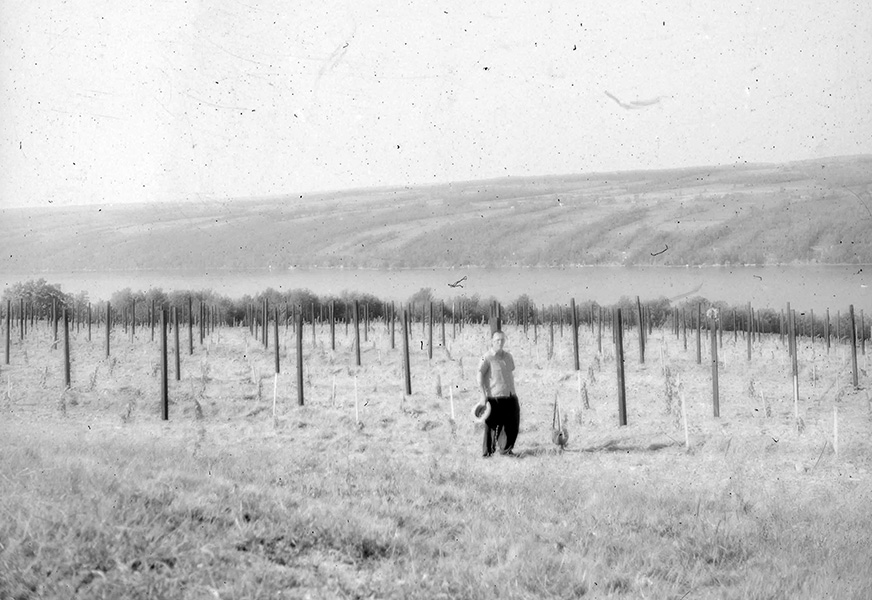
1958
The Beginnings of Dr. Frank's Home Vineyard
In 1957, Dr. Frank became a proud and patriotic U.S. citizen, and in 1958 he purchased 188 acres for $6,000 on the western shore of Keuka Lake. Eugenia recalls that when they first visited the site of the farm the existing house and buildings were falling and the fields had become overgrown and scrubby, but Konstantin seemed to not see that as he bent down, fingered a handful of earth and said to her with a smile, "Good soil."
At the age of fifty-nine, he began to plant vinifera with weekend and evening help from volunteers. In addition to his research plantings, he began to plant some vines to be used for commercial wine production and started his nursery, creating his experiment station. He would produce and sell wine primarily to show the quality of the vinifera grapes.
At the age of fifty-nine, he began to plant vinifera with weekend and evening help from volunteers. In addition to his research plantings, he began to plant some vines to be used for commercial wine production and started his nursery, creating his experiment station. He would produce and sell wine primarily to show the quality of the vinifera grapes.
1958
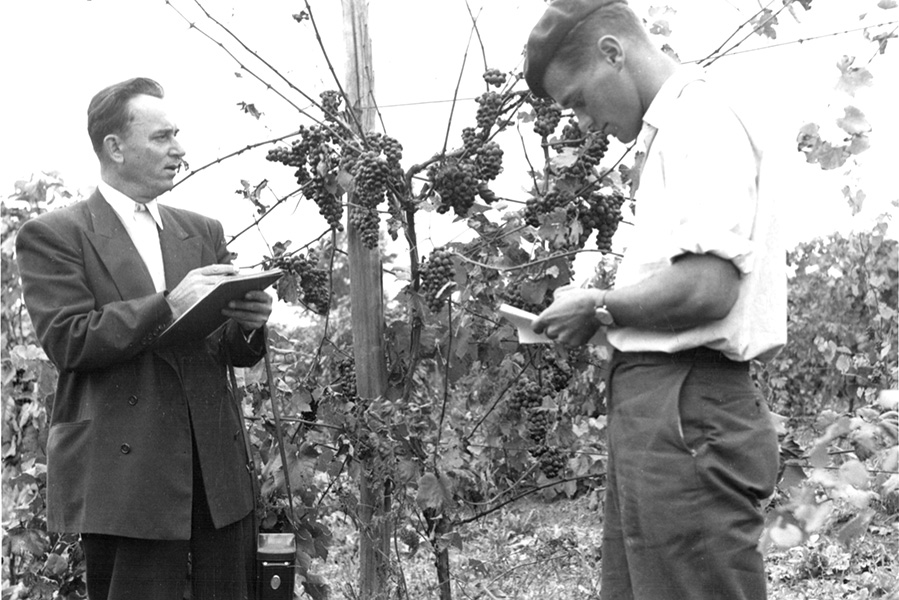
Late 1950s
His Cooperators
Dr. Frank would eagerly share his knowledge and the results of his experiments and research with anyone who would ask. He called his students his "cooperators" and encouraged them to start their ventures. New field trials along the shore of Lake Erie thrived. He also provided advice and cuttings to growers on Long Island.
Late 1950s
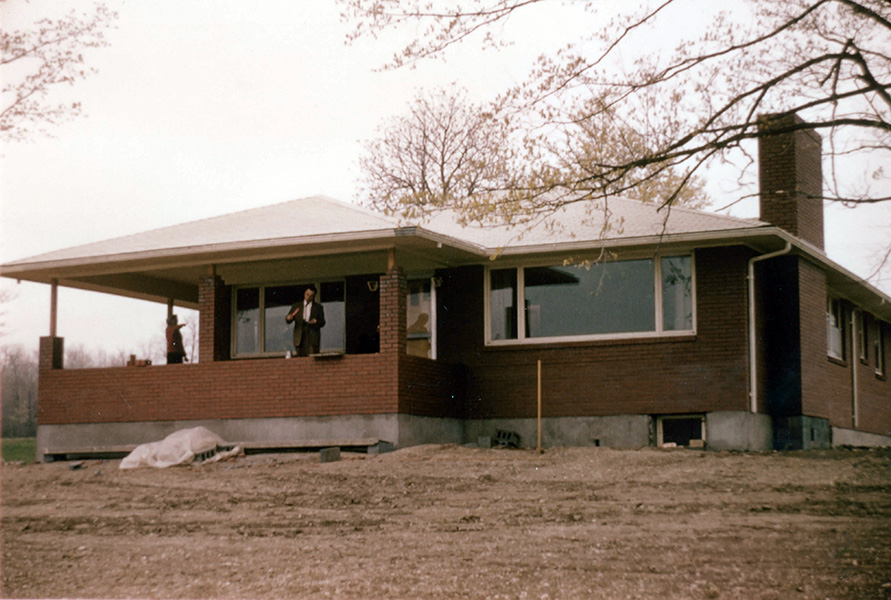
1962
Vinifera Wine Cellars
In 1961, Dr. Frank retired from Gold Seal. With a house built and many acres of vinifera already planted, it was time to make the move. The name of his business left no doubt as to his intentions; "Dr. Konstantin Frank and Sons - Experimental Nursery, Vineyards, and Vinifera Wine Cellars, European Grape Varieties and European Estate Bottled Wine." The following year, in 1962, he released the first vintage from the Vinifera Wine Cellars. He was sixty-three years old and had been in the United States for just eleven years.
1962
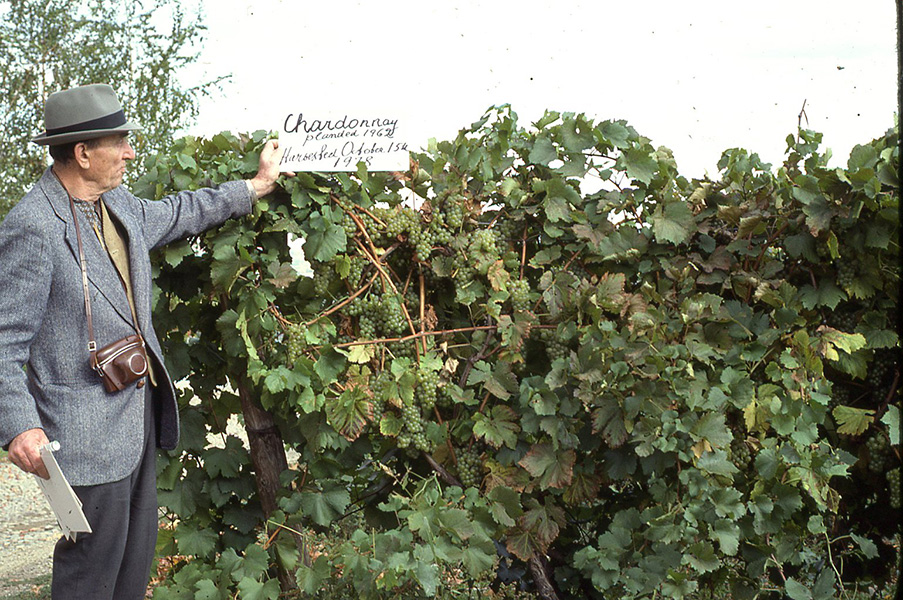
1960-1970s
Sixty Different Varieties
Dr. Frank wanted to grow as many varieties of vinifera as he could to learn and demonstrate which varieties grew best. At one time, as many as sixty varieties or more of vinifera were grown on his property. Some of these varieties were never more than twenty or thirty vines, some perhaps as few as four vines - just enough to satisfy the interests of research. He collected, counted and weighed the production of individual vines. Grapes were harvested by hand and processed in limited batches, each a separate wine that would be tested, tasted, and evaluated. Once the wine was tasted and evaluated, all of the small harvests were blended for bottling and sale.
1960-1970s
Krimia Black Planted 1979
Fetjaska Planted 1979
Mejwani Planted 1975
Pinot Noir Planted 1975 Harvested 1978
Pinot Gris Planted 1965
Different Grape Clusters. No Date Listed.
Pinot Chardonnay Planted 1963
Gewurztraminer Planted 1957
Liza Kapri Grape Planted 1969
Cabernet Sauvignon Planted 1970
Aligote Planted 1968
Ziza Kapri Planted 1971
Senso Planted 1979
Gamay Planted 1957 Photo Taken 1972
Tsekaush Planted 1968
Krimia White Planted 1979
Riesling Planted 1957
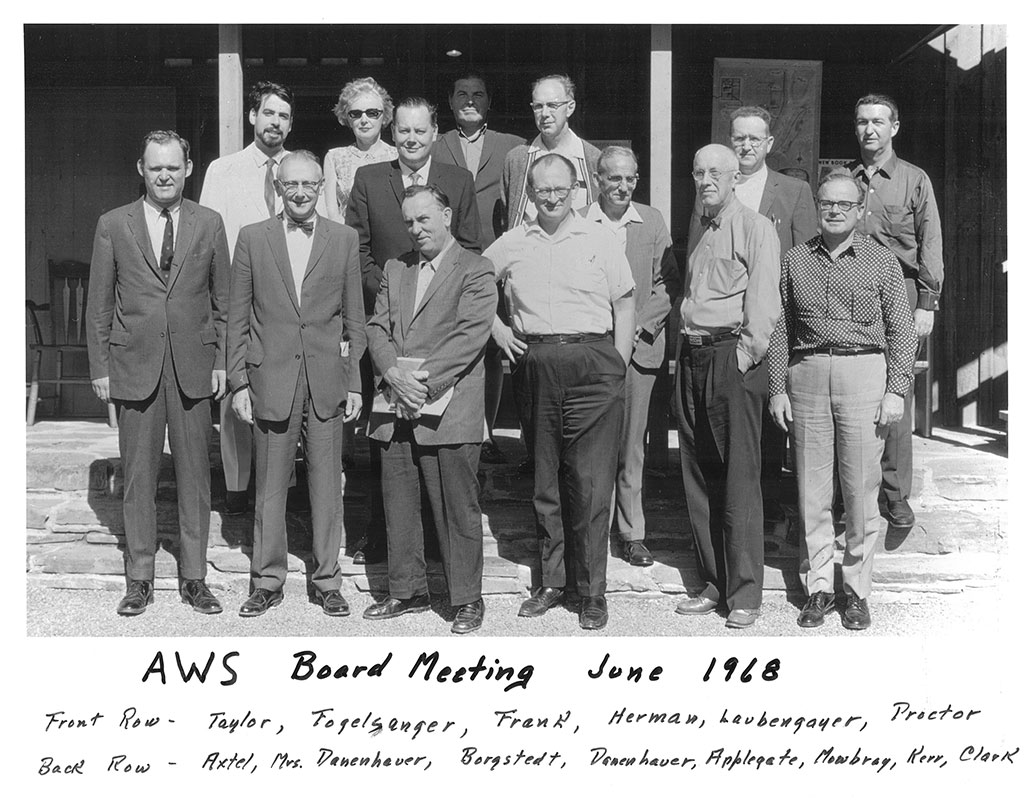
1967
American Wine Society
On October 7, 1967, more than two hundred wine enthusiasts gathered at Dr. Frank's home to organize the American Wine Society (AWS) with Dr. Konstantin Frank as its founder. To this day, the AWS boasts members in forty-one states and more than 120 chapters.
1967
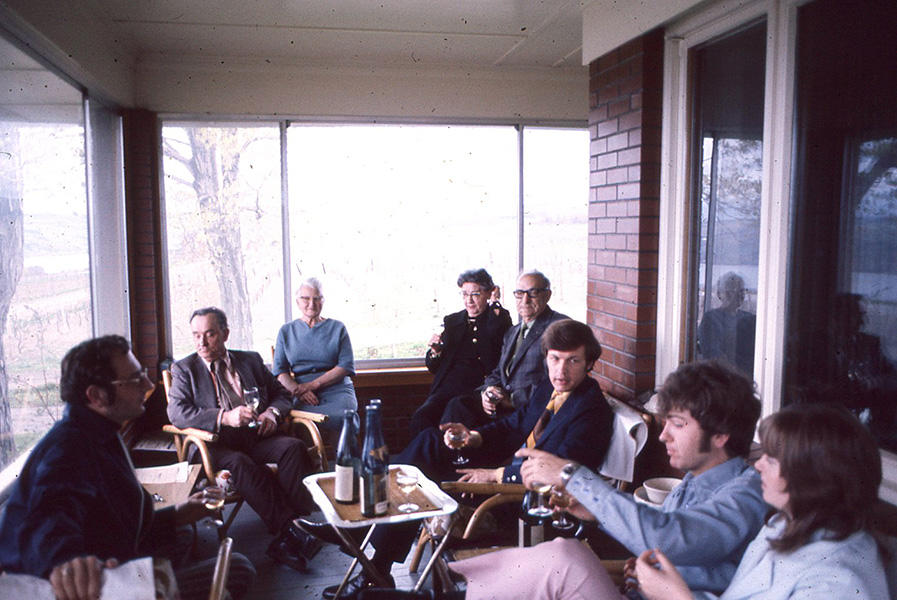
Mid 1960s - Early 1970s
Building The Reputation
Dr. Frank understood that his experimentation was mostly of interest to other scientists and growers and that the wine itself was the best means of attracting a wider audience. His tastings were unusual because he did not stand behind a table and describe each wine as he poured. Rather, he delivered a full-blown lecture on wine, grapes, and winemaking before any wine was poured. These tastings were conducted all over the eastern United States. In the years to come, many visitors to the winery would enjoy glasses of wine, listening to Konstantin's stories and ideas. The breezeway in his home quickly became the center of activity.
Mid 1960s - Early 1970s
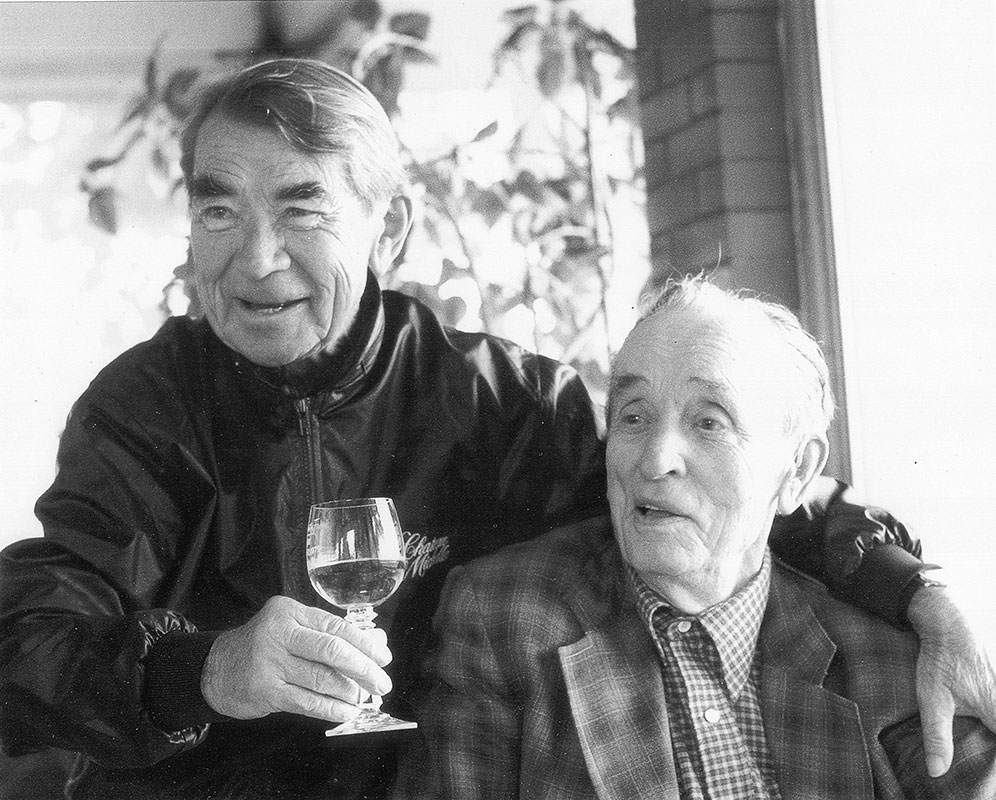
Andre Tchelistcheff
On the West Coast of America, Andre Tchelistcheff would forever change the course of quality winemaking in California. He would be known as the "Father of California Winemaking." Konstantin and Andrew shared a common history and they would sit for hours drinking wine and talking in Russian. Both fought for the White Army in the Bolshevik Revolution and both had left Russia to come to America to become renowned in the wine industry. They had become close friends, and Tchelistcheff visited Konstantin in New York on several occasions. Andre would ultimately recommend Eric Frey who was working at the time at Jordon Winery to take over winemaking operations at Vinifera Wine Cellars when Konstantin's health began to deteriorate.
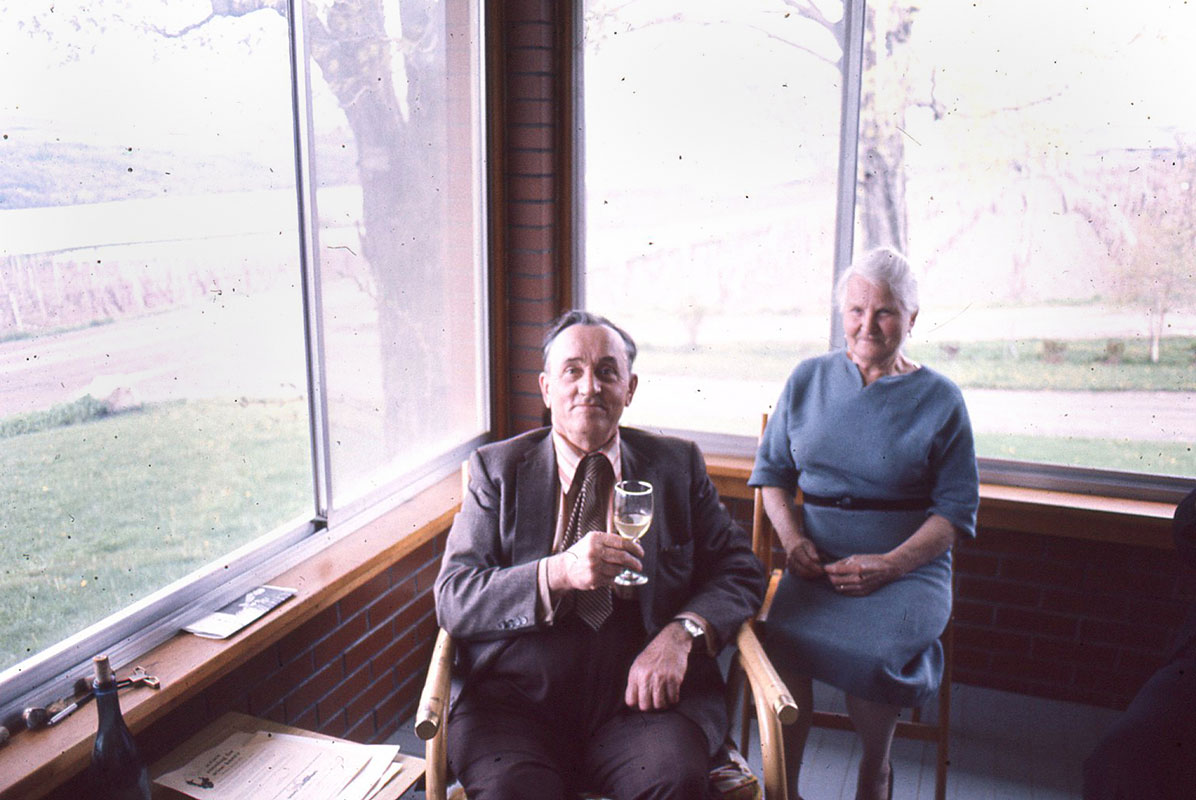
Sadly, on September 6, 1985, Dr. Frank passed with family members by his side. He is remembered throughout the United States as a pioneer and advocate for vinifera grapes and quality wine. The change brought to the wine industry in the eastern United States in such a short time was accomplished by the force of his personality as much as by the power of his ideas.
In the brief twenty years, he has received accolades from four New York governors and has been honored with "Dr. Konstantin Frank Day. A lengthy recognition and appreciation was read into the Congressional Record. His wines were served on several occasions at the White House, as well as for the visiting queen of England. His wine was served at the Wye River Conference between President Bill Clinton and Boris Yeltsin. It's said that the two leaders talked well into the night and sent out for more wine several times.
At the end of his life, there was no doubt about his impact and success. For all of his accomplishments, he is known as the "Father of Vinifera in the East."
In the brief twenty years, he has received accolades from four New York governors and has been honored with "Dr. Konstantin Frank Day. A lengthy recognition and appreciation was read into the Congressional Record. His wines were served on several occasions at the White House, as well as for the visiting queen of England. His wine was served at the Wye River Conference between President Bill Clinton and Boris Yeltsin. It's said that the two leaders talked well into the night and sent out for more wine several times.
At the end of his life, there was no doubt about his impact and success. For all of his accomplishments, he is known as the "Father of Vinifera in the East."
